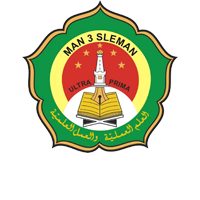Education AI Chatbot for Schools, Colleges & Universities
It often declines to answer prompts on topics related to medical, legal, or financial advice lest it provides incorrect information. The purpose of this post is to share with you a list of some of the best AI chatbots available today which can provide great value to teachers and students. When it comes to creating intelligent and engaging chatbots, Appy Pie’s AI-powered Chatbot Builder emerges as a compelling choice that offers a multitude of advantages. With a wide array of features including discord bot maker and a user-friendly approach, it caters to both beginners and experienced users, making the process of bot creation seamless and efficient. In many ways, AI chatbots are important in the education sector, especially when there’s a need to increase student engagement.
As education continues to evolve, technology is playing an increasingly important role in helping students to learn and grow. One technology that is rapidly gaining popularity in the education sector is chatbots. Chatbots are AI-powered programs that can converse with humans, providing them with information and assistance on a wide range of topics. Uses of chatbots for education are likely to grow and become increasingly sophisticated as the technology advances and expands. Researchers have already developed systems that possess the ability to detect whether or not students can understand the study material.
Whizard API facilitates higher student engagement
Subsequently, the chatbot named after the course code (QMT212) was designed as a teaching assistant for an instructional design course. It was targeted to be used as a task-oriented (Yin et al., 2021), content curating, and long-term EC (10 weeks) (Følstad et al., 2019). Students worked in a group of five during the ten weeks, and the ECs’ interactions were diversified to aid teamwork activities used to register group members, information sharing, progress monitoring, and peer-to-peer feedback. According to Garcia Brustenga et al. (2018), EC can be designed without educational intentionality where it is used purely for administrative purposes to guide and support learning. The ECs were also developed based on micro-learning strategies to ensure that the students do not spend long hours with the EC, which may cause cognitive fatigue (Yin et al., 2021). Furthermore, the goal of each EC was to facilitate group work collaboration around a project-based activity where the students are required to design and develop an e-learning tool, write a report, and present their outcomes.
- These queries are mostly regarding the admission process, courses, scholarships, fee, etc.
- For teachers, AI chatbots can help in automating tasks, such as grading and providing feedback to students.
- In fact, 85% of them admitted to having felt more comfortable and relaxed conversing with the bots over a student partner or teacher as in classical teaching.
- There is a lot of information that educational institutions need feedback on.
- Researchers have also developed systems that can automatically detect whether students are able to understand the study material or not.
You can acquire the information gathered and work on future finances accordingly. Streamline support, increase admissions and automate processes, without any human intervention, by leveraging conversational bots for your university. While the chatbots can answer student queries and support them in their journey, they are helping the other way around too. That’s right, in gathering more useful information about the students and proactively engaging with them for program advocacy and follow-up. With all these uses, chatbots are increasingly revolutionizing educational environments, from schools to higher education.
Education chatbot templates
Although automation can readily assess multiple choice questions and one-word answers, subjective answers still require human intervention. Empower your staff with more meaningful responsibilities and hand-over the student support activities to Konverse. Our conversational AI can offer 24/7 live chat support to the students and answer their repetitive queries.
A chatbot can simulate conversation and idea exchange for low-stakes skills practice. Users can practice language-based soft skills like leading a class discussion, guiding a parent-teacher conference, or even diagnosing English proficiency levels. With a chatbot, users can try out new competencies and hone skills while minimizing the downsides of practicing with a person (eg, judgment, time, repetition). Education chatbots and chatbots in general have come a long way from where they started. They are a one-time investment with low maintenance requirements and a self-improving algorithm. Researchers have also developed systems that can automatically detect whether students are able to understand the study material or not.
On the other hand, the teacher can provide feedback on the tests or assignments students submitted (also through the forms). As for submitting their feedback, students usually opt for online or printed forms whereas the teacher gives spontaneous feedback on the test/assessment conducted. Overall, a chatbot will make it easier for the students to get information on their assignments, deadlines and important upcoming events. The introduction of AI to classrooms was overshadowed by other businesses, mainly because of the tad-slower adaptability and acceptance of the education industry to newly introduced technology. In its hurried efforts to join the AI race, Google has recently introduced Bard, a chatbot that that works separately from Google search engine.
Students commit more with the help of a chatbot, as they can ask as many times as necessary information about the class and get instant response. Research reveals that this technology improves student participation in the classroom. According to one study, retention rates for digital learning are up to 60 percent higher than face-to-face retention rates. Chatbots are conversational interfaces that can integrate artificial intelligence with different use cases. They are currently quite popular and organizations of all kinds are giving completely innovative uses to this technology.
What is Education Chatbot?
By efficiently handling repetitive tasks, they liberate valuable time for teachers and staff. As a result, schools can reduce the need for additional support staff, leading to cost savings. This cost-effective approach ensures that educational resources are utilized efficiently, ultimately contributing to more accessible and affordable education for all.
Read more about https://www.metadialog.com/ here.



